
This is a textbook written for students of industrial instrumentation (measurement and control) at the two-year college level.
- Subject:
- Applied Science
- Career and Technical Education
- Material Type:
- Textbook
- Date Added:
- 04/05/2018

This is a textbook written for students of industrial instrumentation (measurement and control) at the two-year college level.

This course is the first of a two term sequence in modeling, analysis and control of dynamic systems. The various topics covered are as follows: mechanical translation, uniaxial rotation, electrical circuits and their coupling via levers, gears and electro-mechanical devices, analytical and computational solution of linear differential equations, state-determined systems, Laplace transforms, transfer functions, frequency response, Bode plots, vibrations, modal analysis, open- and closed-loop control, instability, time-domain controller design, and introduction to frequency-domain control design techniques. Case studies of engineering applications are also covered.
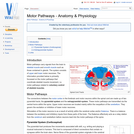
Motor pathways carry signals from the brain to skeletal muscle and smooth muscle such as those contained in glands. The system consists of upper and lower motor neurones. The information provided below is primarily focussed on the motor pathways that coordinate skeletal muscle movement, i.e. motor pathways related to voluntary control of skeletal muscles.

6.252J is a course in the department’s “Communication, Control, and Signal Processing” concentration. This course provides a unified analytical and computational approach to nonlinear optimization problems. The topics covered in this course include: unconstrained optimization methods, constrained optimization methods, convex analysis, Lagrangian relaxation, nondifferentiable optimization, and applications in integer programming. There is also a comprehensive treatment of optimality conditions, Lagrange multiplier theory, and duality theory. Throughout the course, applications are drawn from control, communications, power systems, and resource allocation problems.
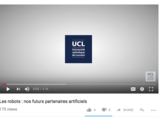
(EN) The resource is a simulation environment where one or several mobile robots compete against each other in order to get the highest possible score for their team. The said robots have a system of differential-drive wheels to move. Their aim is to autonomously collect several targets spread over the playground, bring them back to their base, while avoiding contacts with the opponent robots. Reaching this goal requires developing a controller (coded in C/C++) providing the appropriate voltage to the robot’s wheels, as a function of sensory inputs such as wheel velocity, touch sensors, or beacon detector. Learning outcomes of such a project include velocity control of DC motor, trajectory control, development of path-finding algorithms (optimal path search), avoidance of fixed obstacle and moving opponents, and the development of a high-level strategic decision module. This environment can further be used by the teacher to show concepts related to a mobile robotics class /// (FR) La ressource est un environnement de simulation dans lequel un ou plusieurs robots mobiles s'affrontent afin d'obtenir le score le plus élevé pour leur équipe. Les robots en question utilisent un système de roues à vitesse différentielle pour se déplacer. Leur objectif est de collecter de manière autonome différentes cibles présentes sur le terrain de jeu, afin de les ramener à leur base, le tout en évitant de toucher les robots de l'équipe adverse. Pour ce faire, les étudiants doivent développer un contrôleur (en C/C++) capable de fournir de manière autonome les tensions adéquates aux moteurs du robot, sur base d'informations sensorielles telles que la vitesse des roues, de capteurs de toucher ou de détection de balises. Les compétences de ce projet incluent l'asservissement en vitesse de moteurs DC, le contrôle de trajectoires, le développement d'algorithmes de path-finding (recherche de chemin optimal), l'évitement d'obstacles et d'adversaires mobiles, ainsi que le développement d'un module stratégique de prise de décision. Cet environnement peut également être utilisé par l'enseignant pour montrer en cours les concepts liés au contrôle de robots à roues.

Our objective in this course is to introduce you to concepts and techniques related to the design, planning, control, and improvement of manufacturing and service operations. The course begins with a holistic view of operations, where we stress the coordination of product development, process management, and supply chain management. As the course progresses, we will investigate various aspects of each of these three tiers of operations in detail. We will cover topics in the areas of process analysis, materials management, production scheduling, quality improvement, and product design.
To pursue the course objective most effectively, you will have to:
Study the assigned reading materials.
Prepare and discuss cases, readings, and exercises in class.
Prepare written analyses of cases.

Using examples from anthropology and sociology alongside classical and contemporary social theory, this course explores the nature of dominant and subordinate relationships, types of legitimate authority, and practices of resistance. The course also examines how we are influenced in subtle ways by the people around us, who makes controlling decisions in the family, how people get ahead at work, and whether democracies, in fact, reflect the “will of the people.”
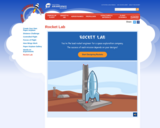
Build your own rocket and complete a mission.
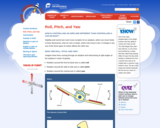
Stability and control are much more complex for an airplane, which can move freely in three dimensions. Learn about roll, pitch, and yaw.

In this activity, learners explore how different deodorants work. Learners treat agar plates with different types of deodorants and compare the bacteria growth on the plates to the control sample.
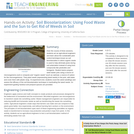
Over the course of three sessions, students act as agricultural engineers and learn about the sustainable pest control technique known as soil biosolarization in which organic waste is used to help eliminate pests during soil solarization instead of using toxic compounds like pesticides and fumigants. Student teams prepare seed starter pots using a source of microorganisms (soil or compost) and “organic waste” (such as oatmeal, a source of carbon for the microorganisms). They plant seeds (representing weed seeds) in the pots, add water and cover them with plastic wrap. At experiment end, students count the weed seedlings and assess the efficacy of the soil biosolarization technique in inactivating the weed seeds. An experiment-guiding handout and pre/post quizzes are provided.

This course examines the fundamentals of detection and estimation for signal processing, communications, and control. Topics covered include: vector spaces of random variables; Bayesian and Neyman-Pearson hypothesis testing; Bayesian and nonrandom parameter estimation; minimum-variance unbiased estimators and the Cramer-Rao bounds; representations for stochastic processes, shaping and whitening filters, and Karhunen-Loeve expansions; and detection and estimation from waveform observations. Advanced topics include: linear prediction and spectral estimation, and Wiener and Kalman filters.

In this activity, students investigate the effect that fins have on rocket flight. Students construct two paper rockets that they can launch themselves by blowing through a straw. One "strawket" has wings and the other has fins. Students observe how these two control surfaces affect the flight of their strawkets. Students discover how difficult control of rocket flight is and what factors can affect it.

This course will consider the ways in which technology, broadly defined, has contributed to the building of American society from colonial times to the present. This course has three primary goals: to train students to ask critical questions of both technology and the broader American culture of which it is a part; to provide an historical perspective with which to frame and address such questions; and to encourage students to be neither blind critics of new technologies, nor blind advocates for technologies in general, but thoughtful and educated participants in the democratic process.

This course explores topics related to the representation and expression of propositional attitudes (e.g. belief, knowledge, and desires) and speech acts (e.g. saying and asking) in natural language. The main focus will be on semantics of predicates such as believe, know, want, say, ask, etc. Other topics will include the syntax of main and embedded clauses and formal representation of the pragmatics of conversation. The course provides practice in written and oral communication.

Students conduct a simple test to determine how many drops of each of three liquids water, rubbing alcohol, vegetable oil can be placed on a penny before spilling over. Because of their different surface tensions, more water can be piled on top of a penny than either of the other two liquids. However, the main point of the activity is for students to come up with an explanation for their observations about the different amounts of liquids a penny can hold. To do this, they create hypotheses that explain their observations, and because middle school students are not likely to have prior knowledge of the property of surface tension, their hypotheses are not likely to include this idea. Then they are asked to come up with ways to test their hypotheses, although they do not need to actually conduct these tests as part of this activity.

Learn about how we will be keeping the skies safe as more and more aircraft are added to the skies.

This resource is a video abstract of a research paper created by Research Square on behalf of its authors. It provides a synopsis that's easy to understand, and can be used to introduce the topics it covers to students, researchers, and the general public. The video's transcript is also provided in full, with a portion provided below for preview:
"A new report in the journal Biochemistry and Molecular Biology Education describes a laboratory activity meant to help students understand allelopathy – a type of chemical warfare used by plants to secure the resources needed to grow. In this process, plants release biochemicals that affect the growth or development of neighboring plants. It is a common tactic of invasive plant species. The mechanism has also been used in agricultural production systems as a sustainable and organic way to manage weeds and soil fertility. For example, horseradish produces the molecule sinigrin, which is hydrolyzed in the presence of the enzyme myrosinase to generate allyl isothiocyanate, or AITC. AITC has been shown to have allelopathic effects on lettuce, including reduced and delayed seed germination rates, decreased root hair growth, and decreased root length. Mustard green also contains AITC and is widely utilized to control weed growth in current agriculture production..."
The rest of the transcript, along with a link to the research itself, is available on the resource itself.